- Home
- P. T. Deutermann
The Nugget Page 3
The Nugget Read online
Page 3
That’s what carriers did: strike. Our battleships were their objective. Even the Japs apparently were still in thrall to their battlewagons. I imagined there were a lot of hurt feelings at very senior levels in our Navy just now. I later heard a story that the commander of the Pacific Fleet had been standing at his office window, watching the immolation of his battleship force, when a spent bullet plinked through the window and hit him in the chest, bouncing off his tunic. Later he was reported to have said, I wish it had killed me. Just like those six carriers had killed off forever more the notion that the sacred battleships, not those ugly carriers, were the queens of the sea. All of us aviators were of course horrified by what had happened at Pearl Harbor, and yet, I was willing to bet that at least some of us harbored an I-told-you-so somewhere in our breast. Although: even as an ensign, I knew better than to say anything like that out loud.
The next morning I woke up to find that we were at sea. Enterprise was so big that someone in the wardroom had had to tell me we were at sea.
FOUR
That someone was my roommate, Ensign Chuck Snead. He’d been aboard for two months now and thus was an “old” hand, although still technically a nugget. He laughed when he saw my surprise.
“Happens to everybody,” he said. “Even in shitty weather, this big beast doesn’t move around much.”
“Where we headed?” I asked.
He shrugged his shoulders. “We’ll find out at morning brief in the ready room. The word is that we’re going out for CarQuals for a couple days, then back into Pearl to refuel and pick up some more planes. SBD Three-A’s, I’m told. You landed on a big-deck yet?”
“Have not,” I replied. “But I figure if I could land on the training decks, this oughta be a piece of cake.”
He rolled his eyes and attacked his scrambled eggs.
“Okay, okay,” I said. “What’d I say wrong?”
He wiped his face with his napkin and then poured us both some more coffee. A steward came by and relieved us of our plates.
“In one sense, you’re right. In good viz, calm seas, it’s a piece’a cake. They call it a big-deck for a reason. But here’s the thing. We’ve got almost ninety birds on this ship. So launching and landing is a really complex dance up there on the flight deck: spotting the guys preparing to go off; recovering the guys coming back and getting them out of the way of the next guy in the pattern? That requires precision flying. Launching, well, you go when they tell you to. Landing, on the other hand, means you get called in to a specific landing slot. You don’t dawdle, you don’t delay, you fly downwind, turn onto final, and get your bird down. You have about ninety seconds to do that before the next bird is on final right behind you.”
“Ninety seconds.”
“Yeah,” he said. “It’s not like the training command, where they wait until the nugget gets the setup right and then lands the thing. And another thing: the LSO is in charge. You set the plane up for the landing, but it’s the LSO who decides whether or not you will actually land or go around.”
The landing signal officer, known as Paddles, was an experienced carrier aviator who stood at the back of the carrier flight deck and watched your approach. He held what looked like oversized Ping-Pong paddles in his hands, festooned with brightly colored ribbons so the approaching pilot could see them, and gestured with them to correct the approaching pilot’s altitude, attitude, and speed as he closed on the flight deck from astern. The pilot could see the deck and analyze his approach on the invisible glide slope leading down to the arresting wires. The LSO could see the approach and whether or not the pilot was anywhere near that invisible glide slope. What looked like a perfect approach from the pilot’s point of view might look like a mid-deck crash well beyond the arresting wires to the LSO.
“Paddles is king,” Chuck said. “If he waves you off, you firewall the throttle and go around. You disregard his instructions, even if you make a perfect landing, they’ll take your wings.”
“But—”
“No buts, Bobby. That’s because Paddles is in direct comms with the Air Boss up in PriFly. He may know something about the deck you don’t, like there’s a plane stuck on the roll-out area. You land, you’ll collide with that plane and kill you, the other pilot, and the arresting gear crew.”
“Well, yeah, they taught us that in flight school and advanced. Always take a wave-off. But there must be circumstances where—”
“No, there aren’t. And that’s because there will be lots of aircraft up there in the pattern. When’s the last time you ever flew with ninety aircraft?”
“Um, never?”
“There you go.” He looked at his watch, which reminded me I had to go buy a watch in the ship’s store. “Time to hit the ready room,” he said.
Two hours later I was strapped into a brand-new Dauntless model 3A dive bomber, waiting for a signal to start the engine. Sitting behind me in place of the gunner was the Bombing Six flight officer, the third most senior officer in the squadron after the CO and the exec. He was Lieutenant William C. Quantrill, from the class of 1937. When he’d introduced himself I’d done a double take. When he saw it, he said, yes, I am, and then launched into his briefing for the training we were going to do that morning. He was black-haired, eagle-eyed, and sported a hatchet-shaped nose. Chuck Snead, my roommate, had told me to watch my p’s and q’s around Quantrill. As flight officer, he was directly responsible for the professional qualifications of every pilot in the squadron. When he’s around, Chuck had told me, everything you do—and say—is under inspection.
Quantrill was flying back seat today because I’d never landed on a fleet carrier before. I had many hours of advanced training, both in field carrier landing practice and also aboard some of our older proto-carriers. Flight school had involved mostly biplanes, but advanced training let us fly the early models of the actual Dauntless dive bomber. Today’s hop was going to be pretty straightforward. Take off, circle the carrier once at 2,000 feet, get into the landing pattern, and then land. Taxi forward, set up for launch, and do it all again. There were ten of us flying this morning. My earphones crackled.
Pilots, start your engines.
Immediately my plane’s aircrew appeared in front of my plane and gave me the signal to make sure the starting circuit was off and then to show them both my hands. That way they could be sure the engine wouldn’t actually start until they’d done their bearing-wash turns, where they walked the big prop around twice to ensure all the engine bearings were wet with oil. Lieutenant Quantrill and I went through the pre-start checklist, and then I fired her up. The Dauntless had a 1,000-horsepower engine; when you started that mill you knew you had your hands full.
We were first to go. As I turned up the engine while standing on the brakes I saw that the airspeed indicator was showing almost 50 knots. Perfect. The shooter gave me the signal, I released the brakes, and then we were off the bow and climbing to the right. I cleaned her up and then climbed to 2,000 feet. Out of the corner of my eye I saw the next plane launch and follow us up into the pattern.
“Continue outbound for five miles and then start your landing checklist,” Quantrill ordered. Once again he played the part of my gunner and read me through the list. Wheels, flaps, heat, mixture, barometer, hook, and a final engine instrument scan. When I reported checklist complete he told me to turn left, set us up in the approach pattern, and then land. The Dauntless almost landed itself with that stiff wind coming over the bow. I was proud to notice that the LSO mostly just stood there, watching my approach with nothing much to say. After dropping the arresting wire, I followed the signals of the wing-walkers and headed back up to the bow.
The second circuit was much like the first, with only one correction from the LSO. Once on deck we taxied to one side of the flight deck and shut down. I slid the canopies back, suddenly aware that I was sweating. Landing on a carrier is a tense experience, but the Navy had cleverly reduced a lot of that anxiety with its checklists and standard procedures. By th
e time you walked through all of that you were out of time to be scared. You just landed. But that didn’t mean nobody was watching. Everyone from the captain on the bridge and the Air Boss up in the tower, to the LSO, all the way down to the deck crews watched and graded every landing, every time. They even stationed two cameramen up on the back of the island to film each landing. The old hands would tell you that if you saw one of them jump up and begin filming, you were doing something wrong.
“That was okay,” Quantrill announced as he unstrapped. I was too busy watching one of the other nuggets get a wave-off and execute a go-around, but then I realized I’d been given a compliment. “Okay” was the top grade. I thanked him.
“Don’t take it personally,” he said. “These are perfect land-launch conditions. That said, you’ve obviously got the feel for it. Your next job is to pick your gunner.”
The plane captain slapped the wing to get my attention. Time to disembark, Nugget, so we can get this bird struck down below and out of the way. I realized Quantrill had already climbed out and was walking aft to pick up his next check-ride. I nearly fell out of the cockpit after catching my flight suit on something. The crew waited patiently for me to figure it out. Once I got down on the deck, the plane captain asked me what Quantrill had had to say.
“Okay,” I reported.
“There you go, Ensign. He gives maybe three okays a year. Go that way, and watch for props.”
That afternoon I did two more hops, this time with one of the more experienced pilots riding the back seat. We launched at sundown, flew around for a while, and then came back aboard just as darkness settled on the ocean. Compared to the training carriers, the deck lighting system on Enterprise looked like a Hollywood opening. I greased it in again, dropped the hook, and headed forward for the second round. By the time I got back astern of the ship, they’d turned the lights down to wartime condition. No more brightly lit glide path, but rather a dim stream of red lights extending down the deck. The brightest thing I could see was the LSO paddle-set. For a moment I was taken aback as I came in at 110 knots, intently watching both my lineup and the LSO’s paddles. It looked good, but then it didn’t. The LSO furiously waved his paddles and I applied power and bent the plane to the left, over and away from the flight deck. I flew out front for five miles to gather my wits, and then turned around for another try. The plane’s radio intercom crackled on.
“Your sink rate was too high,” my back-seater said. “Use power to control your descent, not the stick. Cut when Paddles tells you to. Let’s do the checklist again.”
My second approach was much better and we banged down on the deck like we were supposed to. We taxied over to the deck edge to clear the landing area. My back-seater said not to worry about it. “You lose three-quarters of your visual cues at night,” he told me. “Think of a night landing as an instrument, not a visual approach, with the LSO’s paddles being the primary instrument, and it’ll get easier.”
I was reminded of something one of my flight instructors had told me: one aw-shit undoes 10,000 attaboys.
I make this sound like Bombing Six was the only squadron training and qualifying nuggets. Not true. Torpedo Six, Scouting Six, and Fighting Six were all in the same boat, literally, anxious to deck-qualify their new guys. The Big E stayed out for five days, hurling nuggets into the sky and hoping to get most of them back aboard. I had thought we’d have been roaring west to repay the Japanese for their treachery on December 7th, but then something happened that made things clearer. Bombing Six had the day off, so I’d gone up to vultures’ row, way up on the island structure, to watch flight ops. It was amazing to observe the carefully controlled chaos of the flight deck, with planes landing, re-spotting, launching, or being struck below on one of the elevators. Today Fighting Six, our fighter squadron, was putting their nuggets through their paces.
It was a perfect day for flight ops: a brisk, 25-knot true wind, light whitecaps, and no appreciable swell to make the ship pitch or yaw. Our three plane-guard destroyers were happily blasting sheets of blue-white spray over their decks as they kept up with us at 25 knots. Two cruisers were nearby, sliding through the light chop as if it wasn’t even there. With 50 knots of relative wind streaming over the bow, a launch should have been a piece of cake. It was, until one of our fighters, an F6F Hellcat, wound up to full power, released the brakes, and bolted down the deck and into the air, just like he was supposed to. Except one second later, his engine stopped. Just stopped, its propeller blades snapping to a rigid freeze. The pilot probably was still trying to comprehend what had happened when his Hellcat dropped like a stone directly into the path of the oncoming carrier, disappearing without a trace. They probably tried to turn the big ship to keep from running over him, but a carrier at 25 knots doesn’t turn on a dime. In fact, it doesn’t begin to turn for almost a third of a mile. I found out later that main engineering control had called the bridge to report a brief vibration on the two port shafts. That did not bear thinking about. The three destroyers searched our wake for an hour, but we all knew they were mostly going through the motions. The decision was made to end the flight qualifications and go back into Pearl.
That afternoon our skipper, Lieutenant Channing Cox, got the whole squadron together for what turned out to be my first all-officers’ meeting. We nuggets had seen the CO but not had any interaction with him as yet other than a formal welcome to the squadron. He was a pleasant-faced man with prematurely gray hair. He was polite, reserved, and apparently a man of few words. When he did speak people tended to pay attention as my roomie pointed out. Cox was an expert in the grim trade of dive-bombing and had won several all-Navy bombing competitions, principally by holding his dive down to 2,000 feet before releasing. Fleet doctrine at the time called for release at 4,000 feet. We nuggets kept our distance because we had the impression that he was waiting to find out from the flight officer which ones of us were going to make the grade.
Usually the entire air group flew off to land ashore before the carrier went into port, but not this time. Lieutenant Cox walked up to the podium in the Bombing Six ready room accompanied by our exec, Lieutenant Francis X. Corrigan, and Lieutenant Quantrill, our stern-faced flight officer. The usual ready-room chatter was absent after what had happened earlier. The skipper surprised us.
“Let us stand and pray,” he announced.
We all stood and bowed our heads, not quite sure of what was going to happen next.
“Almighty Father, we pray for the soul of Ensign Croswell, lost today to an engine failure during flight training operations. He did nothing wrong. His engine failed, as engines sometimes do. We commit his soul and his valiant memory to your care and compassion. Amen.”
We stood for a moment of silence. Then he ordered seats and continued.
“When you went through flight training, you saw operational accidents. That’s the nature of flight training because you are learning how to defy an irresistible force called gravity. That same force lives out here, too. I don’t know what caused that mishap today and we may never know. Maybe there’ll be some useful film. But either way, here’s the important lesson: I believe Ensign Croswell was surprised by what happened today. Why? Because when his engine locked up, he pulled his nose up, so high in fact that he flipped over backwards and sliced straight in. You will remember your instructors back at P-Cola taking you up for a syllabus hop and then, when you least expected it, especially if you were focused hard on the lesson of the day, he’d snatch the throttle back to idle to simulate an engine failure. And what’s the first thing you were taught to always do? Push the nose down to maintain airspeed while you figured out what to do and where to land if you had to.
“An engine failure will always happen at the worst possible time, whether through mechanical spite or the efforts of Zero trying to shoot it and you to pieces. So you always reserve a little bit of brainpower, no matter what you are doing in the air, to prepare yourself for an engine failure. Our dive bombers can take a lot of punishment,
especially these new models. They have some armor protection for the crew and those new self-sealing gas tanks. But that irresistible force called gravity never goes away. We even make use of it when we try to bomb ships, which is why we’re called dive bombers. Always be prepared for that mill to fail on you, like right at the moment you pull out from a bombing run and every ship in the Jap formation is shooting at you.”
He paused to scan the room, especially we new guys sitting in nugget row, like misbehaving children being seated in the very first row in church.
“I’m not telling you be afraid of your airplane. I am telling you to review your training and first-response actions every time you’re doing anything except sightseeing. Especially as you approach one of those worst-case scenarios for an engine failure, like landing, launching, bombing, or dogfighting. Here endeth the lesson. Lieutenant Quantrill will now tell you where we’re going and why.”
The skipper stepped down off the stage and sat down. Quantrill reached behind him and pulled the curtains apart. The wall behind was covered in one big ocean chart, with several small islands scattered all over it. I couldn’t make out the map’s scale, but it looked huge.

 The Nugget
The Nugget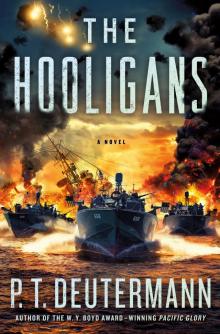 The Hooligans
The Hooligans SPIDER MOUNTAIN
SPIDER MOUNTAIN![Cold Frame [retail] Read online](http://i1.bookreadfree.com/i/03/19/cold_frame_retail_preview.jpg) Cold Frame [retail]
Cold Frame [retail] Sweepers
Sweepers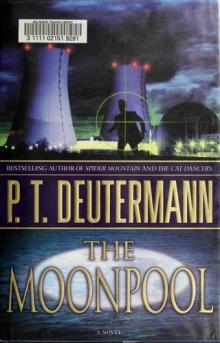 Cam - 03 - The Moonpool
Cam - 03 - The Moonpool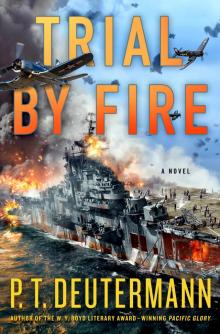 Trial by Fire
Trial by Fire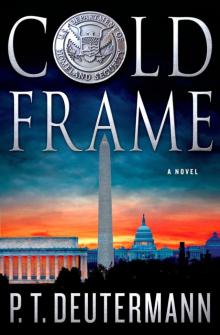 Cold Frame
Cold Frame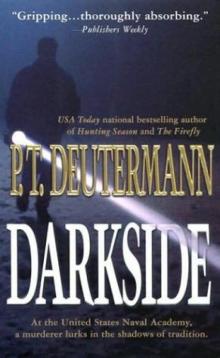 Darkside
Darkside Cam - 04 - Nightwalkers
Cam - 04 - Nightwalkers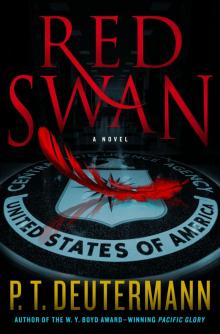 Red Swan
Red Swan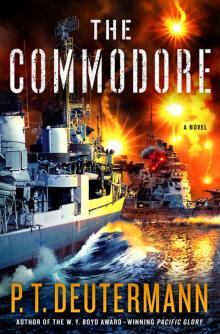 The Commodore
The Commodore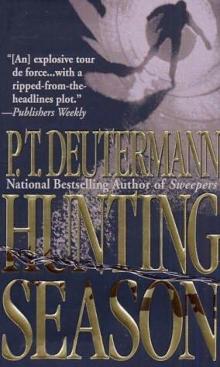 Hunting Season
Hunting Season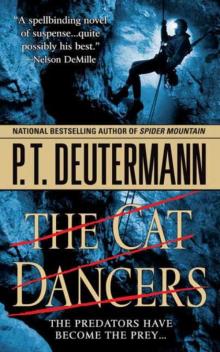 The Cat Dancers
The Cat Dancers Scorpion in the Sea
Scorpion in the Sea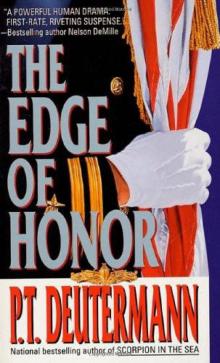 The Edge of Honor
The Edge of Honor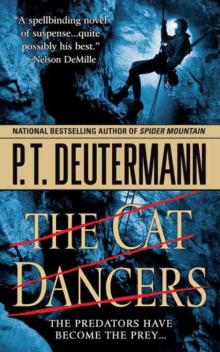 The Cat Dancers cr-1
The Cat Dancers cr-1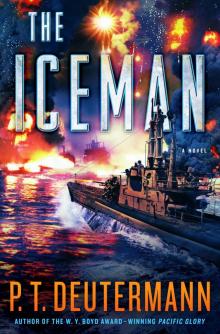 The Iceman
The Iceman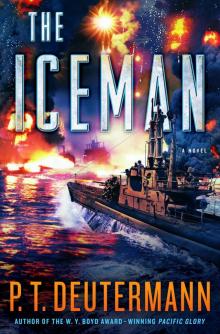 The Iceman_A Novel
The Iceman_A Novel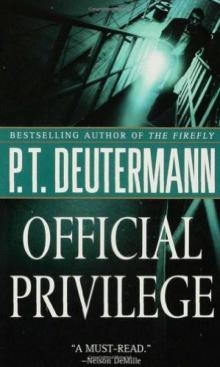 Official Privilege
Official Privilege Sentinels of Fire
Sentinels of Fire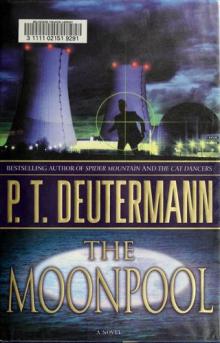 The Moonpool cr-3
The Moonpool cr-3 Nightwalkers cr-4
Nightwalkers cr-4 The Firefly
The Firefly Spider mountain cr-2
Spider mountain cr-2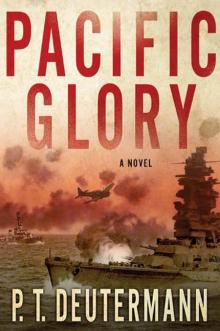 Pacific Glory
Pacific Glory The Last Man
The Last Man